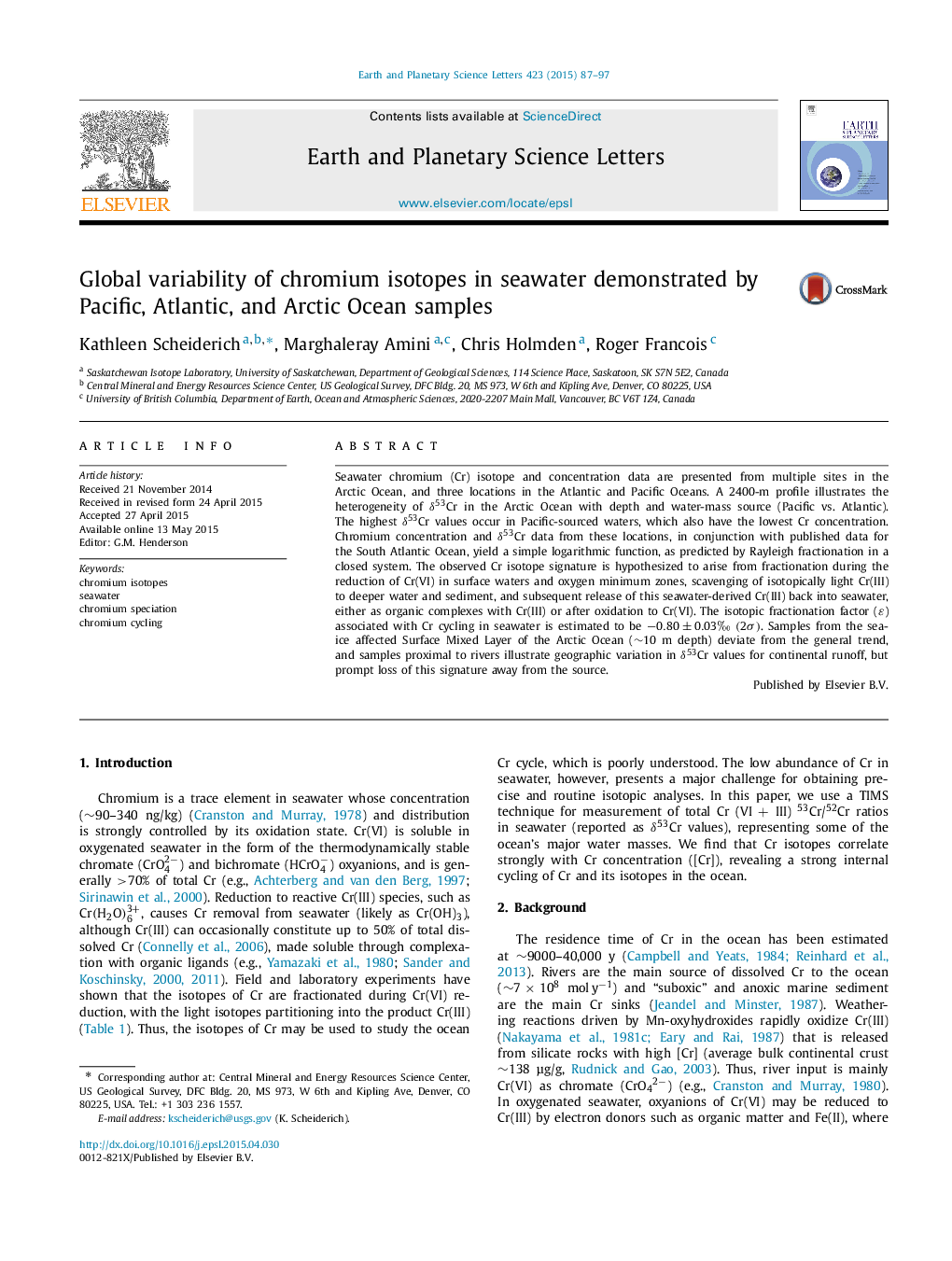| Article ID | Journal | Published Year | Pages | File Type |
|---|---|---|---|---|
| 4676970 | Earth and Planetary Science Letters | 2015 | 11 Pages |
•Chromium isotopes show a range of values in global seawater samples.•Globally, there is a strong correlation between δ53Cr and [Cr] in seawater.•Cr(VI) reduction in the oceans appears to have a fractionation factor of −0.80‰−0.80‰.•Reduction of Cr(VI) in surface waters creates low [Cr], high-δ53Cr values.•Deep waters have higher [Cr] and low δ53Cr from oxidation of scavenged Cr(III).
Seawater chromium (Cr) isotope and concentration data are presented from multiple sites in the Arctic Ocean, and three locations in the Atlantic and Pacific Oceans. A 2400-m profile illustrates the heterogeneity of δ53Cr in the Arctic Ocean with depth and water-mass source (Pacific vs. Atlantic). The highest δ53Cr values occur in Pacific-sourced waters, which also have the lowest Cr concentration. Chromium concentration and δ53Cr data from these locations, in conjunction with published data for the South Atlantic Ocean, yield a simple logarithmic function, as predicted by Rayleigh fractionation in a closed system. The observed Cr isotope signature is hypothesized to arise from fractionation during the reduction of Cr(VI) in surface waters and oxygen minimum zones, scavenging of isotopically light Cr(III) to deeper water and sediment, and subsequent release of this seawater-derived Cr(III) back into seawater, either as organic complexes with Cr(III) or after oxidation to Cr(VI). The isotopic fractionation factor (ε ) associated with Cr cycling in seawater is estimated to be −0.80±0.03‰−0.80±0.03‰(2σ)(2σ). Samples from the sea-ice affected Surface Mixed Layer of the Arctic Ocean (∼10 m depth) deviate from the general trend, and samples proximal to rivers illustrate geographic variation in δ53Cr values for continental runoff, but prompt loss of this signature away from the source.
